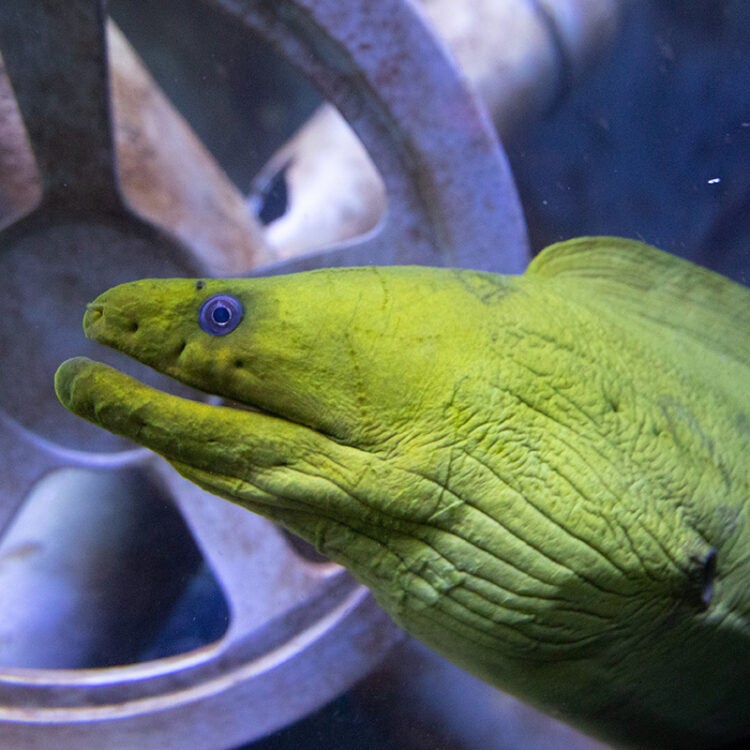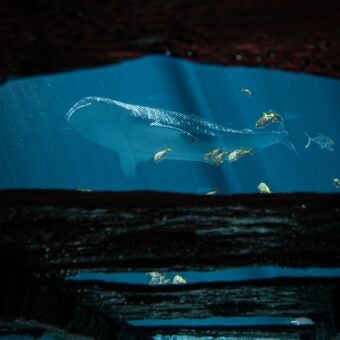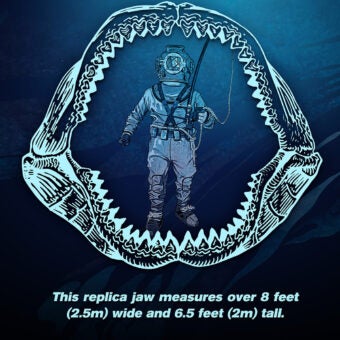-
Size
5 feet (1.5 m) -
Diet
Crustaceans and fishes -
Range
Atlantic Ocean -
Habitat
Tropical waters near coral reefs, rocky shorelines and mangroves
Physical Characteristics
- Coloration is dark brown to green; the body is elongated, muscular and snakelike with a continuous dorsal, caudal and anal fin. Lacks pectoral and pelvic fins.
- Covered in a layer of yellow mucus to protect against parasites.
- Large mouth with many teeth. The teeth are large with smooth edges. Pharyngeal teeth located in the throat can move forward into the mouth.
- Common length: 5 feet (1.5 m); maximum length is 8.2 feet (2.5 m); maximum weight is 64 lbs. (29 kg)
Animal Fact
Moray eels open their mouths to filter water over their gills.
Diet / Feeding
- Diet mainly consists of crustaceans and fish.
- Nocturnal hunter.
- May wrap itself in the shape of a knot around prey to pull it into smaller pieces.
Range / Habitat
- Occurs in the Western Atlantic from New Jersey to Bermuda and the Gulf of Mexico, Brazil, and the Eastern Atlantic around the Ascension Islands.
- Found in tropical waters near coral reefs, rocky shorelines and mangroves, often seen with only the head poking out from a crevice, hole or ledge, in depths up to 164 feet (50 m). Commonly in depths less than 98 feet (30 m).
Reproduction & Growth
- Oviparous, or egg-laying.
- Transparent, leaf-like larval stage called a “leptocephalus.”
Conservation Status
- “Least Concern” on the IUCN Red List.
Additional Information
- Also known as the “green conger.”
- Solitary and aggressive species.
- Sense of smell used to locate prey and spawning site.
- One of the largest moray eel species.
- Breathe by continuously opening their mouths to pump water over their gills.
- Used as food in some parts of the world, though large individuals may be toxic.





